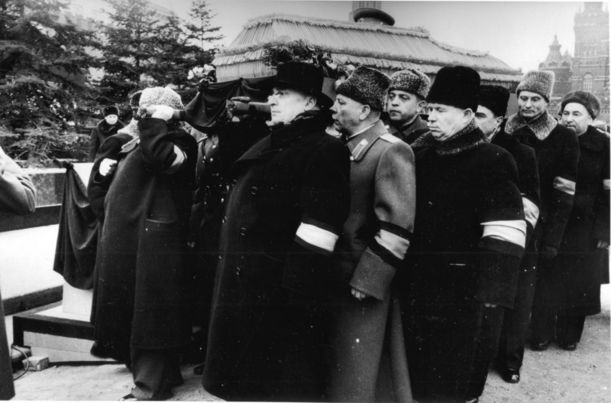The Dissolution of the Gulag System and Memories of the Gulag
Shortly after Stalin’s death in March 1953, the new regime began reorganizing the Gulag system. The ineffective forced labour and the high costs of maintaining the camps led to the dissolution of the majority of them. No critical reappraisal of the Gulag history took place.
Whereas within the process of gradual destalinization, Nikita Krushchev permitted a number of publications about the Gulag, the same was not true of his successor Leonid Brezhnev. It was not until the era of Mikhail Gorbachev’s reform politics beginning in 1986 that a more critical examination was possible. Previously prohibited books now appeared, as did the newly written memoirs of former inmates. Initiatives such as the “Memorial” Society founded in 1988 demanded the reappraisal of the Gulag history and the comprehensive rehabilitation of its victims.
Stalin’s Death
Joseph Stalin died on 5 March 1953. Among the Gulag inmates, his death sparked expectations alternating between hope and resignation.
As a member of the politburo (executive committee) of the Central Committee of the CPSU and Moscow party secretary, Nikita Krushchev had been a member of the circle closest to Stalin, and he decided the struggle for succession in his favour. In September 1953, following a transitional period, Krushchev was elected First Secretary of the Central Committee of the CPSU. Soviet society now underwent gradual liberation from a number of the worst Stalinist excesses.

Leading politicians and members of the military carrying Stalin’s coffin to the mausoleum, 9 March 1953. Lavrentiy Beria (1st fr. l.) and Nikita Krushchev (3rd fr. l.) are seen in the foreground.
Beria, chief of the Soviet secret police from 1938 onwards, bore a decisive share of the responsibility for the terror of the Stalinist era and the Gulag. After Stalin’s death he initially served as First Deputy Premier and Minister of the Interior. In June 1953 he was arrested on order by Krushchev, and in December of the same year he was sentenced to death in a secret trial and executed.
Source: Russian State Archive for Film and Photo Documents, Krasnogorsk
